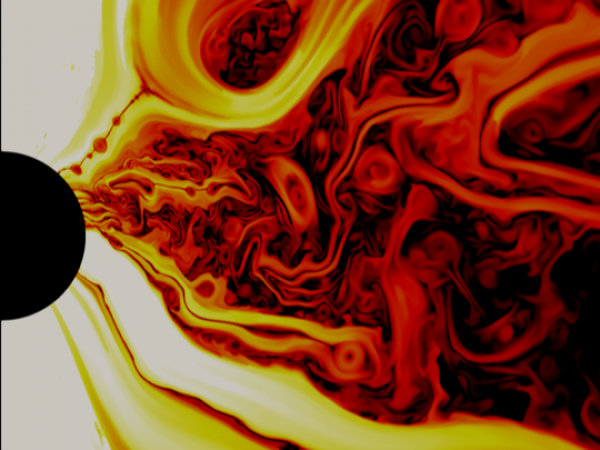
Bart Ripperda
Princeton University/Flatiron Institute
Thursday, February 13, 2020
10:30am
Hot spots, or plasmoids, formed due to magnetic reconnection in thin current sheets are conjectured to power frequent bright X-ray and near-infrared flares from supermassive black holes, like Sgr A* in the center of our Galaxy. It is of yet unclear how, where, and when thin current sheets form in black hole accretion flows, and whether magnetic reconnection in such sheets is capable of producing highly energetic plasmoids. In this talk I will show general relativistic resistive magnetohydrodynamics models of magnetic reconnection and associated plasmoid formation in a wide range of accretion flows. I will show that plasmoids are a ubiquitous feature of accretion flows regardless of the magnetic field geometry and the spin of the black hole. The location of the current sheets, how frequently they form, and typical size of the largest plasmoids do depend strongly on the magnetic field geometry. In all cases we observe plasmoids forming close to the event horizon within 5 to 10 Schwarzschild radii, after which the they grow to macroscopic scales and advect along the jet boundary or into the disk. We determine the typical reconnection rate, the Ohmic heating, and the occurence of non-ideal electric fields responsible for particle acceleration. We also show that an explicit resistivity allows for converged numerical solutions, such that the electromagnetic energy density evolution and dissipation is independent of the grid resolution and numerical heating is negligible for the extreme resolutions we considered.